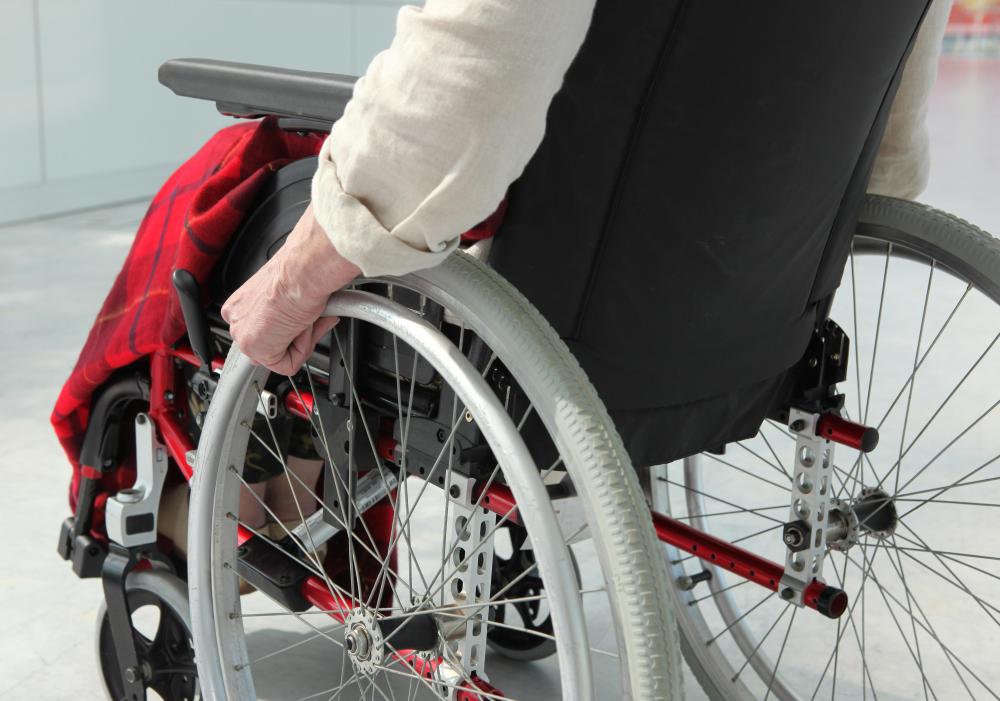At WiseGEEK, we're committed to delivering accurate, trustworthy information. Our expert-authored content is rigorously fact-checked and sourced from credible authorities. Discover how we uphold the highest standards in providing you with reliable knowledge.
What are the Different Types of Multiple Sclerosis?
Multiple Sclerosis (MS) is a disease affecting the central nervous system. It rarely affects people in exactly the same way, and over time, several types have been identified. As well as the four main types of this condition, there are numerous subtypes that may be used to describe different forms of the disease. The four main types are relapsing/remitting, secondary progressive, progressive relapsing, and primary progressive.
Relapsing/remitting multiple sclerosis is defined by the patient having relapses or episodes of the disease. Slightly over 80% of those suffering from MS begin with this type. During a relapse, patients may experience symptoms not shown before, and may also see other symptoms experienced before either worsen, change or not be present. During the remission phase, the symptoms lessen, and the effects caused by symptoms such as disabling of the limbs may also lessen or may completely disappear. Periods of remission greatly vary. Some will experience only a few days of remission, while others may experience months or years of remission.

Secondary progressive multiple sclerosis is usually a second stage of relapsing/remitting MS. About 90% of those with that type will progress to this type. Remissions are characterized by worsening of the disease, so that relapses become more severe. Generally, after a while there are very few relapses while the condition simply worsens until the central nervous system is completely impacted. This process, however, can take many years, and many with this type can still live fairly normal and active lives because the progression is not sudden.

Progressive relapsing multiple sclerosis is characterized by acute attacks, with little recovery during relapses, which are few. Meanwhile, the relapses do not represent the recovery of the central nervous system, but simply a break prior to more significant attacks. Roughly 5% of those with MS have this type.
Primary progressive multiple sclerosis occurs in about 10% of those with MS. The body becomes gradually disabled, but the person tends not to suffer from acute attacks. This type may be more difficult to diagnose because there are no attacks to herald the disease. However, gradual impairment of movement, and increased disability usually helps diagnose the disease within a few years of development.

Subtypes of multiple sclerosis come down to fine details. One subtype called Devic’s Disease attacks the spinal column and particularly the eyes. This may result in pain in the eyes, blurred vision, and acute loss of vision. Some may lose color differentiation in vision.
Benign MS is a subtype of relapse/remission. Usually a person has a single attack, and then the disease goes into remission for an extended period of time, sometimes a decade or more. Malignant multiple sclerosis, on the other hand, is very serious, and fortunately rare. The disease progresses at an extremely fast rate, and is most likely to cause significant disability within a year of onset. This subtype may also be called acute MS or Marburg’s variant.
AS FEATURED ON:
AS FEATURED ON:

















Discussion Comments
Cupcake- Excessive heat does make MS worse.In order to diagnose the disease, doctors perform a variety of ms tests.
They issue MRI’s, blood tests and a spinal tap. The spinal tap is when the doctor removes fluid from the spinal column and analyzes it in order to analyze it.
MS treatments include medication, physical therapy, and occupational therapy. Drugs such as Avonex and Betaseron are used to lessen the symptoms. Klonopin is used for muscle spasms.
The National Multiple Sclerosis Society offers a variety of information regarding the disease even offers information on local chapters and support groups.
Anon102208- I agree. It was a well-written article. I wanted to add the many symptoms of MS begin to show up between the ages of 20 and 50.
These ms symptoms include lack of energy, blurred vision, tingling sensation and loss of feeling in the limbs, dizziness, and possible slurred speech.
MS attacks the central nervous system causing the brain to get improper messages. The white blood cells fight the myelin, which protects the central nervous system.
The Myelin is important because it processes the direction of movement from the nerve cells. Since this becomes impaired the brain cannot provide direction and problems occur in movement.
Many MS patients lead normal lives because the disease progresses gradually. They're instructed to exercise and have a healthy diet and avoid heat which makes the symptoms of the disease worse.
this was a very helpful article. thank you.
Post your comments